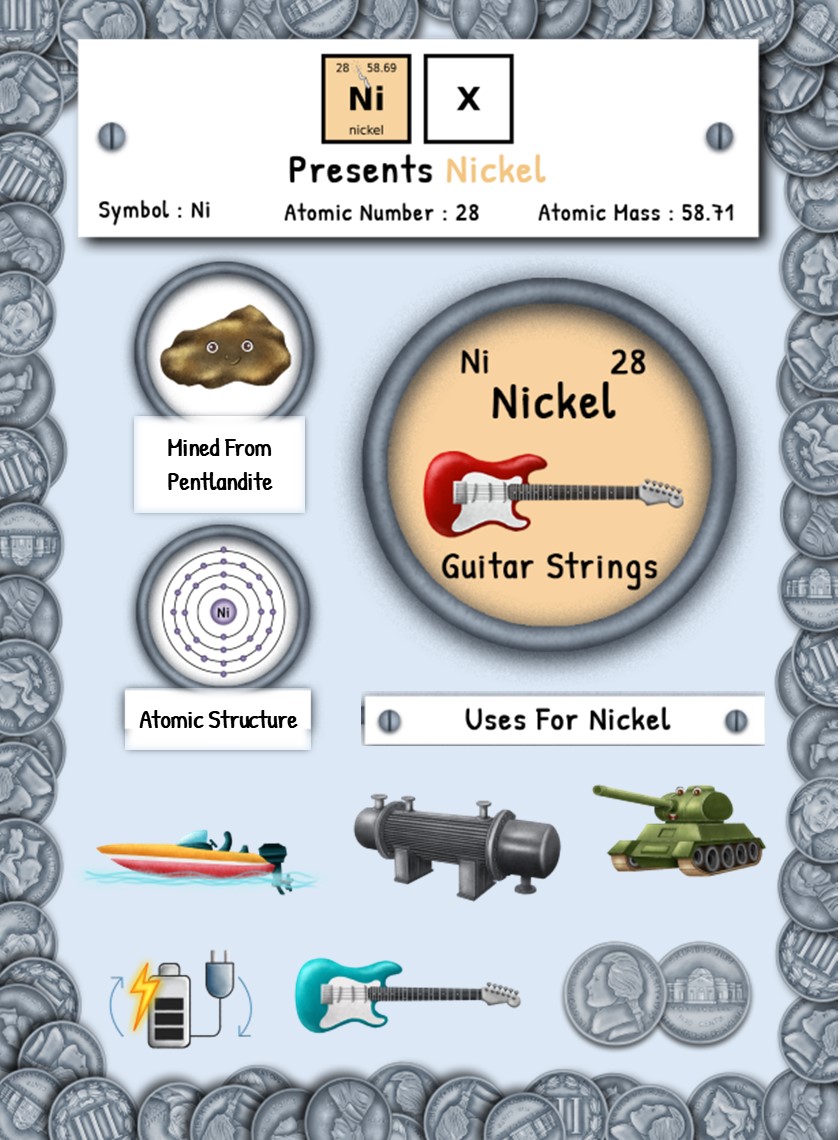The Historic Significance and Fading Relevance of Nickel: Exploring Its First Uses and Modern Shifts

Nickel, a silvery-white metal, has a fascinating history dating back centuries. From being used initially to produce medals and coins, to finding its way into multiple industrial applications, nickel’s versatility has been widely acknowledged. However, over time, various factors have propelled the decline of its importance in these traditional uses, leading to the rise of alternative materials. This article delves into the early applications of nickel and delves into the reasons behind its diminishing utilization for these purposes in the modern era.
Early Uses of Nickel:
The discovery and use of nickel can be traced back to ancient times. Initially mistaken for silver due to its similar appearance, it gained recognition as a distinct elemental metal in the early 18th century. Its distinctive properties, such as resistance to corrosion and ability to alloy with other metals, made it a desirable material for various applications.
- Coins and Currency:
One of the earliest uses of nickel was in the production of coins and currency, primarily in the form of nickel silver (a copper-nickel alloy). The United States adopted the nickel as a coinage metal in the mid-19th century due to its robustness, allowing for long-lasting circulation. However, with the rising costs of nickel during World War II, its use in coinage gradually decreased, and alternative metals gained prominence. - Decorative Applications:
Nickel also found its place in decorative items such as jewelry, tableware, and cutlery. Its lustrous appearance and relative affordability made it an appealing choice. However, this usage has reduced in recent times due to changing trends and preferences, with materials like stainless steel and silver becoming more popular in these domains. - Industrial Applications:
The industrial revolution brought about a surge in the demand for nickel. Its corrosion-resistant properties were harnessed in applications such as plating metals, electroplating, and coating various surfaces. Nickel’s use in the production of stainless steel, an alloy primarily composed of iron, chromium, and nickel, became significant. Stainless steel’s resistance to corrosion, durability, and aesthetic appeal led to its widespread use in kitchenware, construction, and other industries.
Changes in Use and Fading Relevance:
- Shifting Market Dynamics:
One key reason for the decline in nickel’s use for traditional purposes is economic. The fluctuating costs of nickel, driven by factors like mining practices, global demand, and trade dynamics, increased the volatility and, subsequently, the cost of products utilizing nickel. This led to the exploration of alternate materials that were more cost-effective without compromising quality or performance. - Technological Advancements:
As technologies evolved, new materials emerged that outperformed nickel in specific applications. For example, advancements in metallurgy led to the development of specialty steel alloys and other materials that offered superior corrosion resistance, wear resistance, or strength characteristics compared to traditionally nickel-based alternatives. This reduced the reliance on nickel for various applications, driving the substitution trend. - Environmental and Health Concerns:
Another factor contributing to nickel’s diminishing relevance is its environmental and health impacts. Nickel mining and its associated processes pose environmental challenges, while nickel’s release into air and water can lead to pollution. Furthermore, certain individuals may be sensitive to nickel, experiencing contact allergies. These ecological and health concerns have driven efforts to explore greener alternatives, pushing nickel into the background in many areas.
From its early use in coins and currency to its prominence in various industrial applications, nickel has played a significant role in human history. However, changes in market dynamics, technological advancements, and concerns related to the environment and health have all contributed to the diminishing utilization of nickel for these traditional purposes. While its relevance may have shifted, nickel continues to find applications in new industries, such as batteries for electric vehicles and renewable energy technologies, indicating its adaptability and continued importance in evolving industries.
This article is brought to you by Sybrina Durant, the author of the middle grade picture book, Magical Elements of the Periodic Table Presented Alphabetically By The Metal Horn Unicorns. Learn More. In that book Nickel is presented by the unicorn, Nix. Read Nix’s Story.

Sybrina Publishing Offers Fun Activities Based On The Book
Magical Elements of the Periodic Table Presented Alphabetically By The Metal Horn Unicorns
Browse Magical Periodic Table Elements Store
Inter-Active Unicorn-Themed Periodic Table from Magical Elements of the Periodic Table Presented Alphabetically by The Metal Horn Unicorns
Click here to use This Inter-Active Viewer To Learn More About The Elements Each Unicorn Represents On This Periodic Table.
Want To Hear The No Metal No Magic Song?
100 Unicorn Tee Shirt Designs – Browse To Pick Your Favorite
They are available in short sleeve tees, long sleeve tees, tank tops, sweat shirts for all ages.




